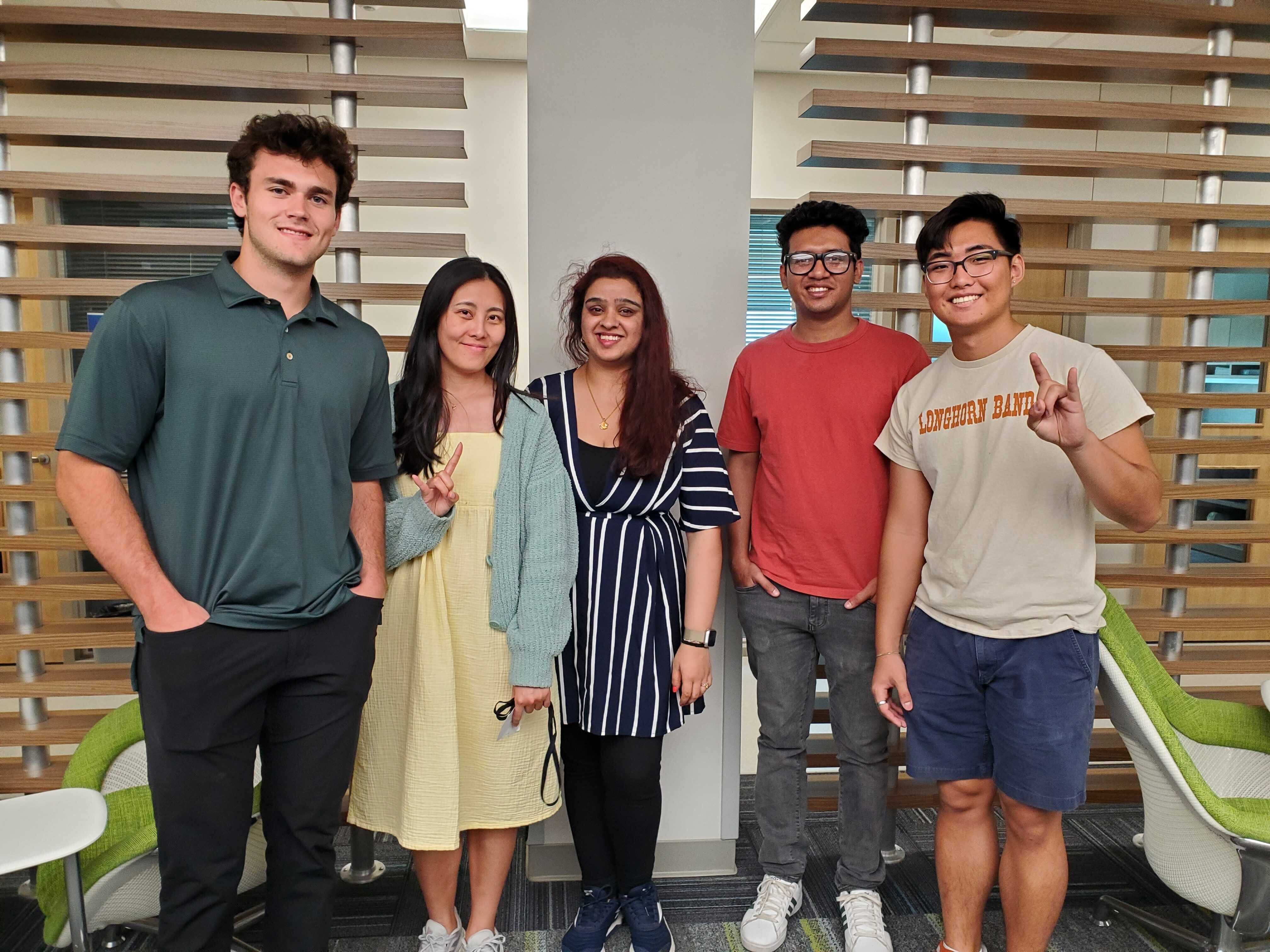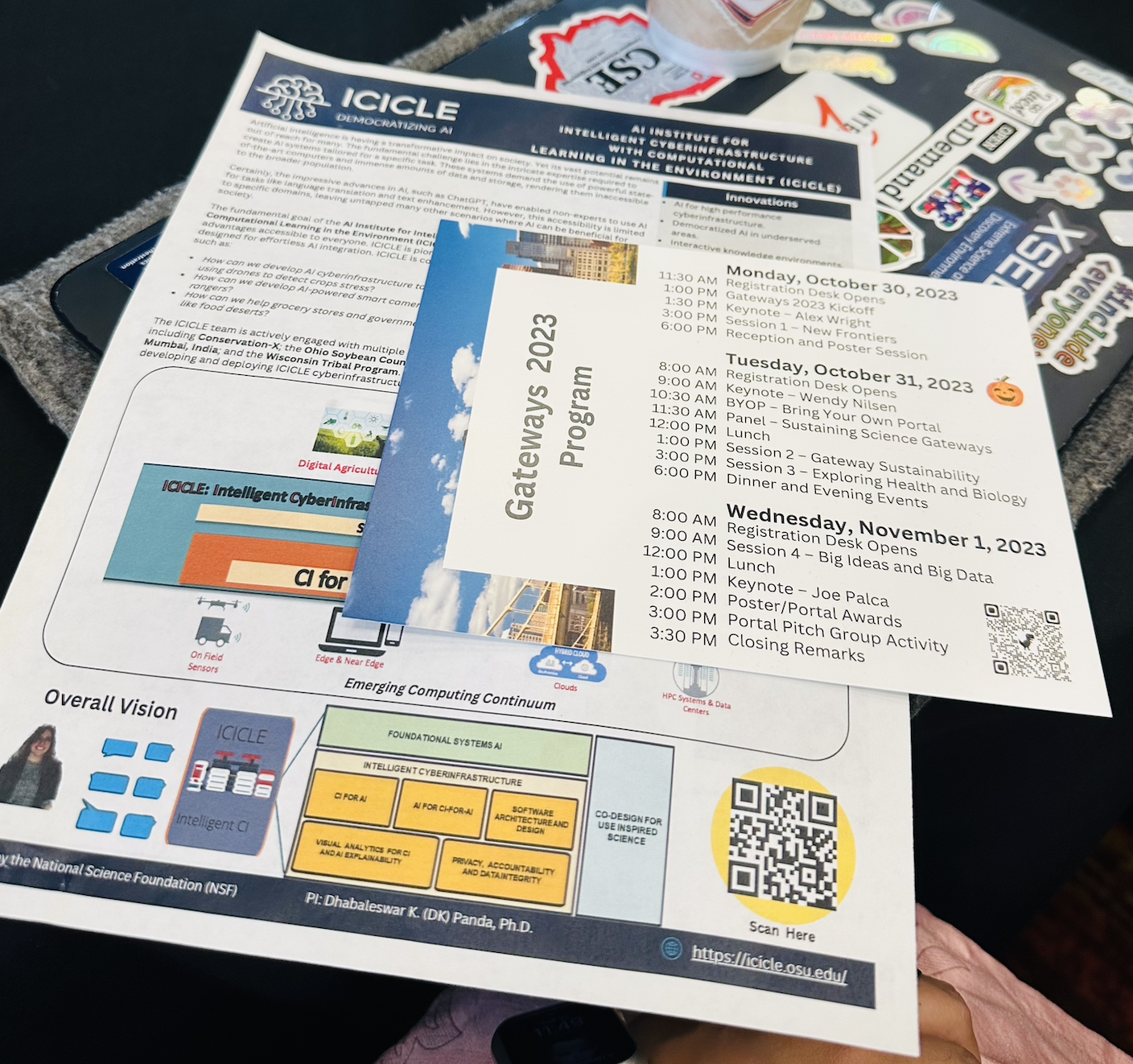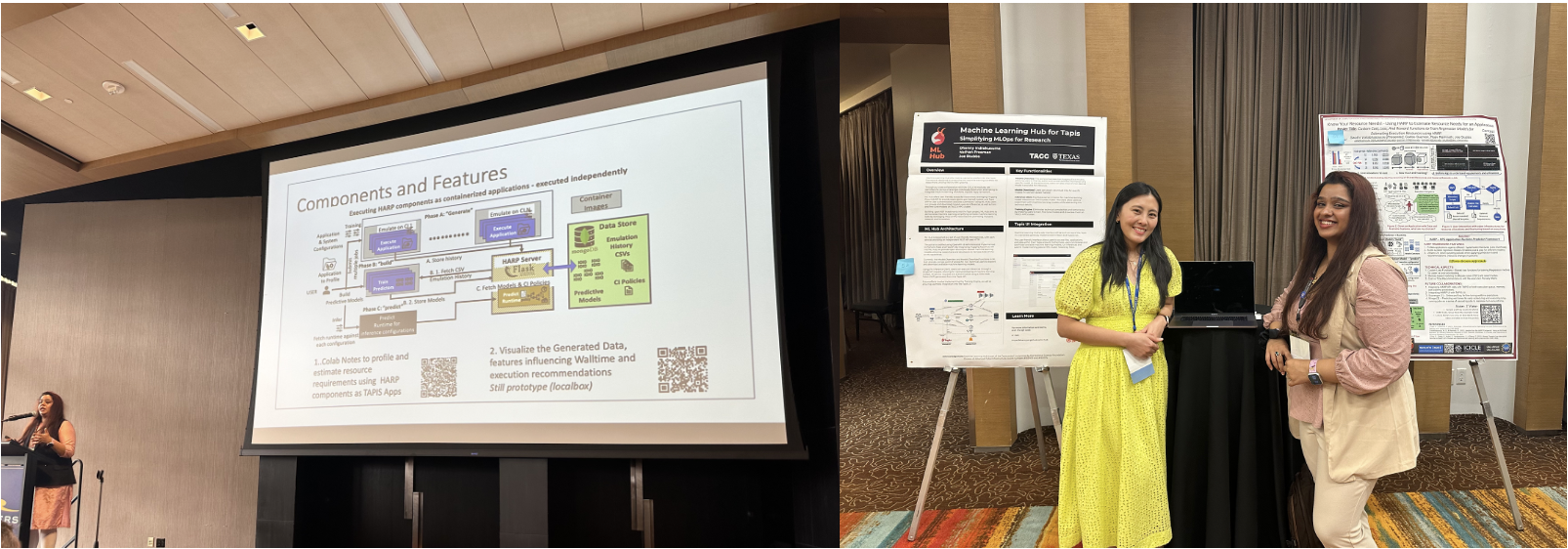Gateways 2023 Perspective: Swathi Vallabhajosyula (Supported Student)
- Details
- Published on Tuesday, 16 January 2024 05:13
By: Swathi Vallabhajosyula | The Ohio State University

As a fifth-year Ph.D. student, most of my time is dedicated to extensive literature reviews, data curation, creating and analyzing datasets, gaining deep insights into various machine learning models, and developing custom artificially intelligent workflow frameworks to address diverse research challenges. However, there needs to be more focus on transforming research application code into user-friendly, reproducible, and easily integrated software components for end users and collaborators. Through my work with HPC gateways like OnDemand and TAPIS, I've come to appreciate the significance of translating research into an end-to-end Model-View-Controller software component for enhanced usability and interpretability.
My research primarily revolves around developing the HARP (HPC Application Resource Predictor) framework, which utilizes artificial intelligence to estimate resource requirements for high-performance computing (HPC) in scientific workflows. Working with HPC infrastructures like the Ohio Supercomputer Center (OSC) and the Texas Advanced Computing Center (TACC), researchers face challenges in resource allocation due to unique workflow demands and associated costs. During my SGX3 internship, I focused on enhancing HARP's software engineering aspects by applying FAIR principles and addressing generalizability issues. I explored new technologies to create cyberinfrastructure-agnostic software components distributed as containerized images, centralizing execution history as machine-readable metadata. This research is partially funded by the NSF AI institute, ICICLE, aimed at simplifying and expanding AI usage for analytics, modeling, and automation, particularly in the context of artificially intelligent modules for cyberinfrastructure allocations in scientific workflows (Ai4CI).
As an SGX3 fellow, I submitted a Portal and Poster and received a sponsorship to attend Science Gateways 2023 in Pittsburgh, Pennsylvania. Science gateways are user-friendly, end-to-end solutions that facilitate the utilization of complex research infrastructures, encompassing computing, data resources, and domain-specific tools to support research and education. These gateways are research portals, virtual research environments, science platforms, virtual labs, eResearch tools, digital repositories, or research cyberinfrastructure. The conference brought together a diverse community of researchers, developers, and end users, offering valuable feedback for improving my research components and providing insights into enhancing the usability of my software components.
 ICICLE@Science Gateways: In addition to presenting my work through a portal and Poster, I had the opportunity to participate in tutorials such as "Exploring the Tapis Pods Service and Analyzing Its Initial Performance," led by Christian Garcia. This session illuminated the integration of ICICLE and TAPIS for user-driven workflows like Smart Food Sheds and Animal Ecology-Camera Traps. The tutorial highlighted the Tapis Pods service as an open-source API within the Tapis platform, streamlining Kubernetes container management, networking, and security at TACC. It offers flexible container deployment with distinct features and firm performance.
ICICLE@Science Gateways: In addition to presenting my work through a portal and Poster, I had the opportunity to participate in tutorials such as "Exploring the Tapis Pods Service and Analyzing Its Initial Performance," led by Christian Garcia. This session illuminated the integration of ICICLE and TAPIS for user-driven workflows like Smart Food Sheds and Animal Ecology-Camera Traps. The tutorial highlighted the Tapis Pods service as an open-source API within the Tapis platform, streamlining Kubernetes container management, networking, and security at TACC. It offers flexible container deployment with distinct features and firm performance.
Unlocking the Mysteries of Gateways and Beyond: Sometimes Even Aliens Need a User-Friendly Portal!
In addition to showcasing our posters, where 'HARP-know your resource needs!' incidentally secured the runner-up spot, we, the SGX3 interns, were greeted with a drumroll as we introduced our student portals, tailored to meet various user needs, all while engaging with an enthusiastic and dynamic audience. We had the privilege of engaging in a luncheon discussion with the esteemed NSF panelists, gaining valuable insights into NSF-funded internships, fellowships, and career prospects. Furthermore, we were treated to an insightful presentation on the learning and workforce development opportunities offered by the NSF Office of Advanced Cyberinfrastructure (OAC). We sought a fresh perspective on "science" through an enlightening presentation titled "The Truth About Science Communication" by Joe Palca. This presentation drew from Mr. Palca's extensive four-decade career communicating science to the public. It provided insights into when science becomes newsworthy and how to make seemingly obscure topics captivating. It also touched upon the significance of holding a PhD for aspiring science journalists. 
The 13 minutes for gateway ideation: To conclude "Gateways23" on a high note, we wrapped up a delightful 13-minute hackathon, where participants brainstormed inventive concepts for a new gateway to tackle the considerable hurdles in digitization. We also had the opportunity to express our vision for this portal. "Let our inner innovator shine as we delve into the world of gateways!"
Wait, there was more!
Have you ever found yourself navigating the labyrinth of a conference, yearning for a companion to explore the city with after hours? Do you wish someone to engage in meaningful conversations about career paths and life choices? Gateways introduced a mentor-mentee program, pairing each student with a mentor. Together, they share meals, attend sessions, and seek guidance in career and life matters. Meeting my mentor was genuinely enriching, offering insights into novel aspects of application profiling, particularly in academic settings with limited access to HPC resources. As a mentor to another participant, who happened to be a fellow SGX3 intern, we enjoyed a delightful time reconnecting over our work, life experiences, and, of course, food! The SGX3 fellows had the chance to engage with the NSF panelists and participate in a lunch meeting to gather insights about possible NSF opportunities that assist in graduate school, research, and potential postdoctoral positions.

More videos about Gateways23 and the Science Gateways Community can be found here: https://www.youtube.com/@sciencegateways